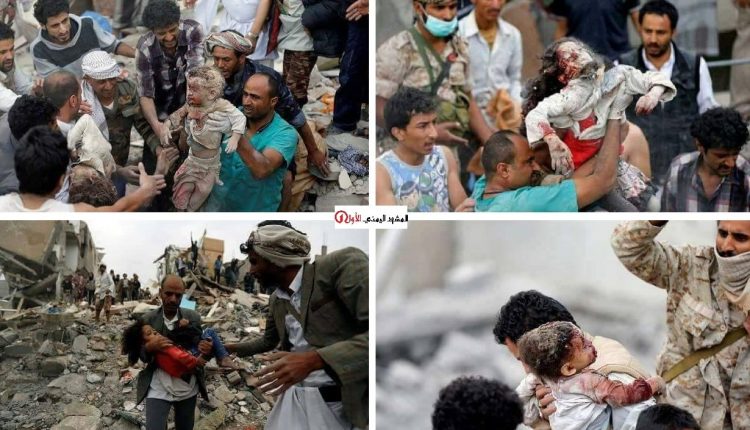For 4th Year Saudi Barrages Bring Death, Loss to Yemeni Families on Eid
For the fourth consecutive year, Eid al-Fitr has done little to bring quiet to Yemen’s war-weary residents. In Hodeida, airstrikes have been replaced with a new norm: snipers, artillery shells, and missiles.
“This is our Eid gift from Saudi Arabia,” a visitor to a private hospital in Hodeida told MintPress as he pulled back a blood-soaked blue plastic cover draping the lifeless body of his child. The girl, whose torso and arms were dotted with holes from high-caliber bullets, did not make it to her second birthday — she was killed in a barrage of gunfire let loose by Saudi Coalition gunmen as they peppered residential neighborhoods on Al-Shuhada Street in the al Hali directorate of Hodeida. An elderly woman and a man were also killed in the attack, which severely injured at least three other residents.
The attack on Al-Shuhada Street was one of many carried out by the Saudi-led Coalition in the first three days of Eid al-Fitr, a Muslim holiday marking the end of the month of Ramadan. Dozens of civilians, including women and children, were also killed in the attacks.
On the first day of Eid al-Fitr, three people were killed and nine were wounded when Coalition warplanes swarmed villages in the Hasha district of Dhal’i province. That attack came less than two weeks after Coalition gunmen shelled a family home in the same province, killing two women and injuring a child.
In Hajjah, scores of civilians were killed when missiles launched by military vessels moored in Yemen’s territorial waters rained down upon the province’s residents. “That two massacres were committed by the U.S.-backed Saudi-led Coalition in Dhali and Hajjah on Eid al-Fitr proves [the Coalition’s] criminal bloody and brutal policy in Yemen,” Mohammed Abdulsalam, a spokesman for Ansar Allah, said in the wake of the attacks.
More than 70,000 people have been killed in Yemen since January 2016 according to a new report by the Armed Conflict and Location Event Data Project (ACLED) issued last Thursday, including 10,000 people who were killed in the past five months alone. The ACLED report recorded 3,155 direct attacks that targeted civilians, resulting in more than 7,000 civilian deaths.
Another Eid, another barrage
For the fourth consecutive year, Eid al-Fitr has done little to bring quiet to Yemen’s war-weary residents. In Hodeida, airstrikes have been replaced with a new norm: snipers, artillery shells, and missiles. Despite a Houthi withdrawal from three key ports in the province under a U.N.-sponsored cease-fire deal, the Saudi-led Coalition continues to hammer the strategic port city, leaving its residents increasingly pessimistic about internationally backed efforts to end the four-year war.
On Tuesday, Saudi airstrikes leveled Hodeida’s Zubariyah water and sewage station, which services 80 percent of the city’s residents. The attack fell on the same day that Saudi Arabia announced it was taking “humanitarian steps” to rescue an Iranian sailor from Yemen’s coastal waters “for medical reasons.” The accident was the talk of many of Hodeida’s residents, who questioned the Saudi claims and their reason for saving a stranded sailor while causing civilians in Hodeida to die of thirst.
For Yemen’s residents, Saudi-led Coalition attacks have affected their ability to celebrate Eid, as they have affected every aspect of their lives. Loved ones are no longer present, lost to the brutal war; the blockade, the diseases and the famine have all radically altered what has traditionally been a joyous occasion.

